The flock now have the option of enjoying the view from the other side of Sullivan, though I’m not sure they’re fully appreciative of it.
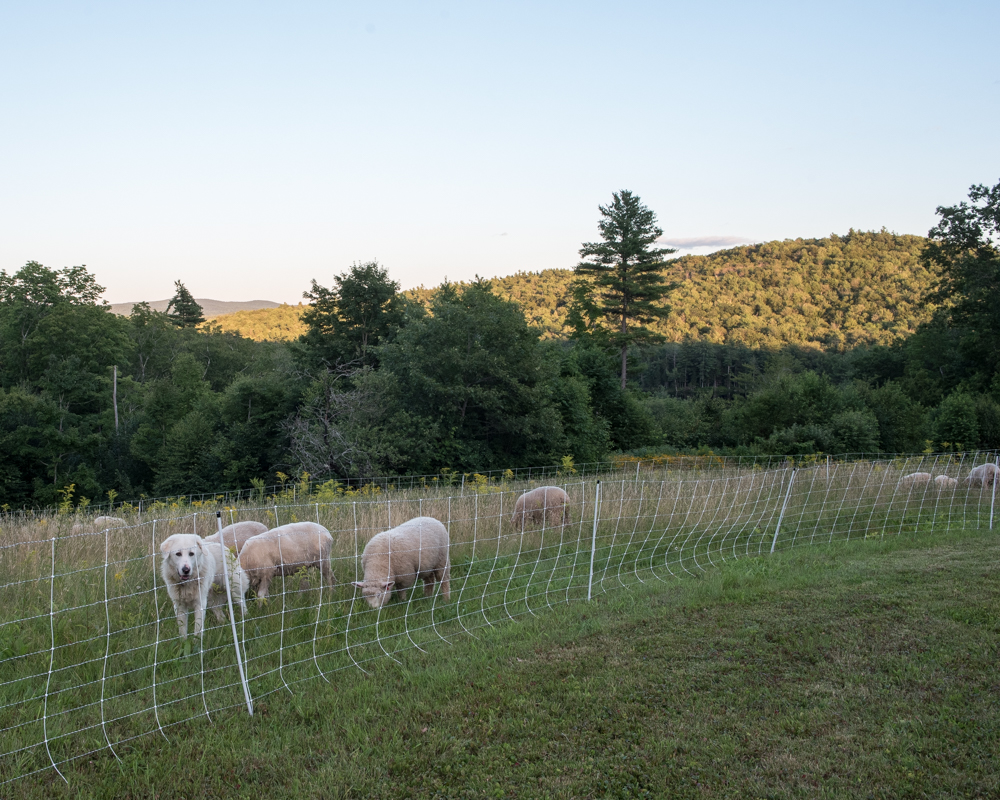
Tagged: bravo, hills, maremma, Mark Smith, sheep, Sullivan NH, sunset, view
The flock now have the option of enjoying the view from the other side of Sullivan, though I’m not sure they’re fully appreciative of it.

Tagged: bravo, hills, maremma, Mark Smith, sheep, Sullivan NH, sunset, view
Today was my third sheep-moving day.
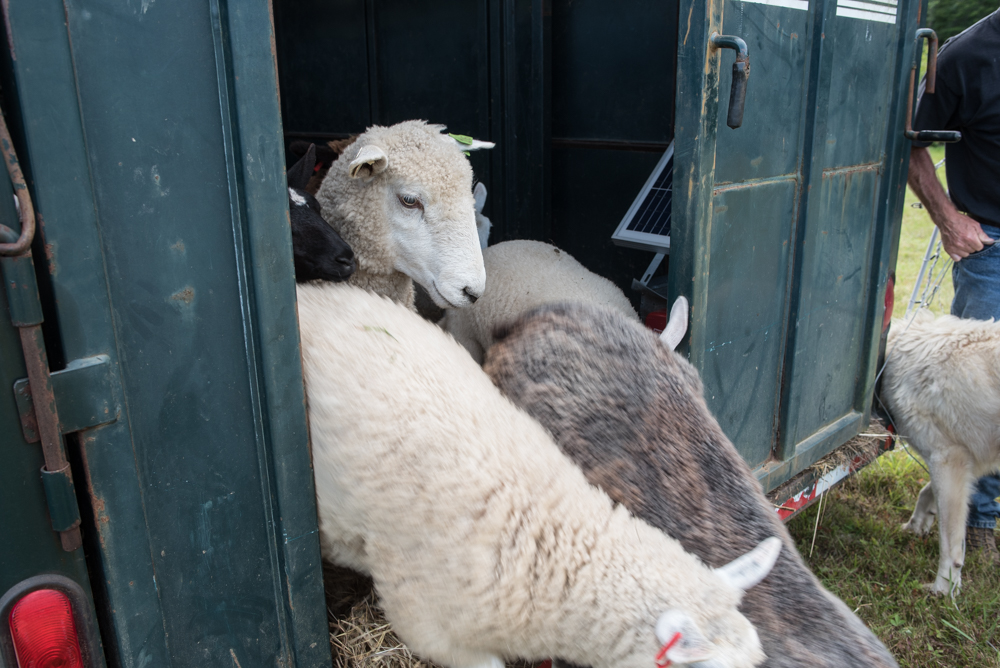
People continue to show up to help (thanks to Holly and Mark today!), and I’m getting incrementally more competent with the various operations involved in the moves, so progress. The sheep are now at Mark Smith‘s place near the top of Sullivan, overlooking Chapman Pond, grazing on lovely pasture that Mark cleared out of dense woods.
Cass does most of the sheep handling on moving days, but Luc really wants to help out. Today he appointed himself Trailer-checker, let me know when sheep were in fact in the trailer, in case I forgot.

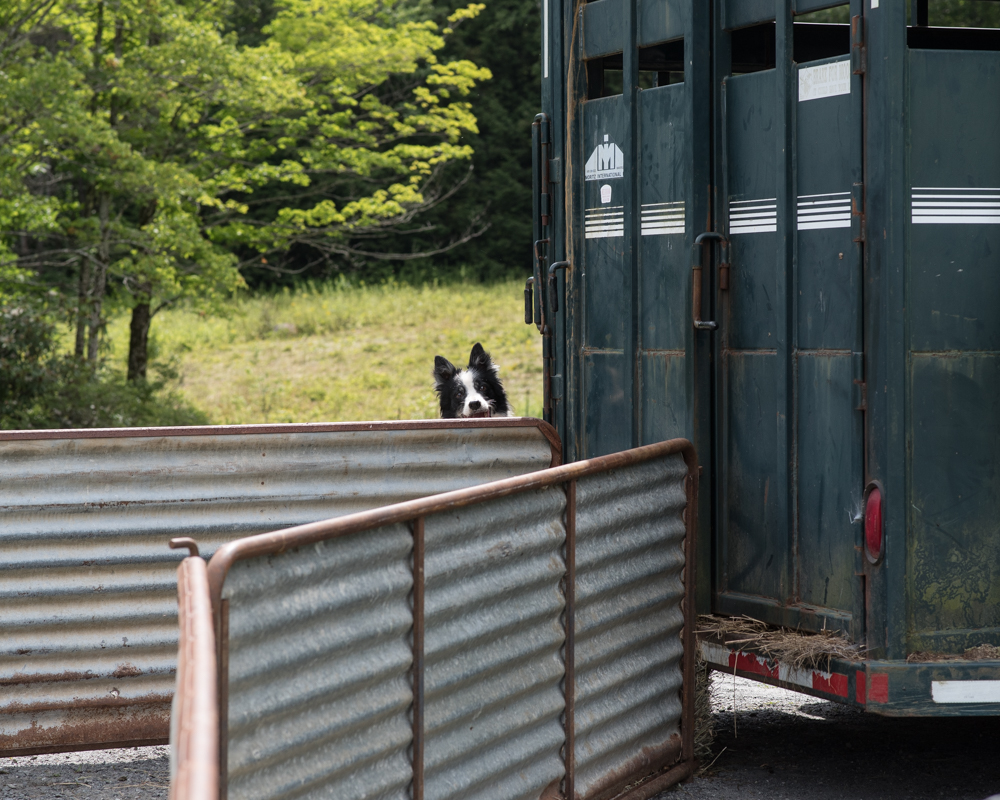
Tagged: border collie, Cass, Chapman Pond, Holly Lorinser, Luc, Mark Smith, moving day, sheep, stock trailer, Sullivan
Since the incident with the peach leaves, Bill and I have been talking on and off about toxic pasture plants. Both the University of New Hampshire and the University of Vermont publish guides to toxic pasture plants, but both seem to be written more with liability in mind than edification. Any plant with even the remotest risk of animal toxicity is listed, ad absurdum: the UNH document warns of the danger that acorns pose to swine, with no apparent regard for the famous dry-cured hams of Spain, which come exclusively from acorn-fed pigs. The hyper-alarmism of these documents leaves me at a bit of a loss trying to decide what really poses a danger to my flock.
I was confused, for example, when I saw one of my sheep seeking out and eating milkweed leaves this morning.
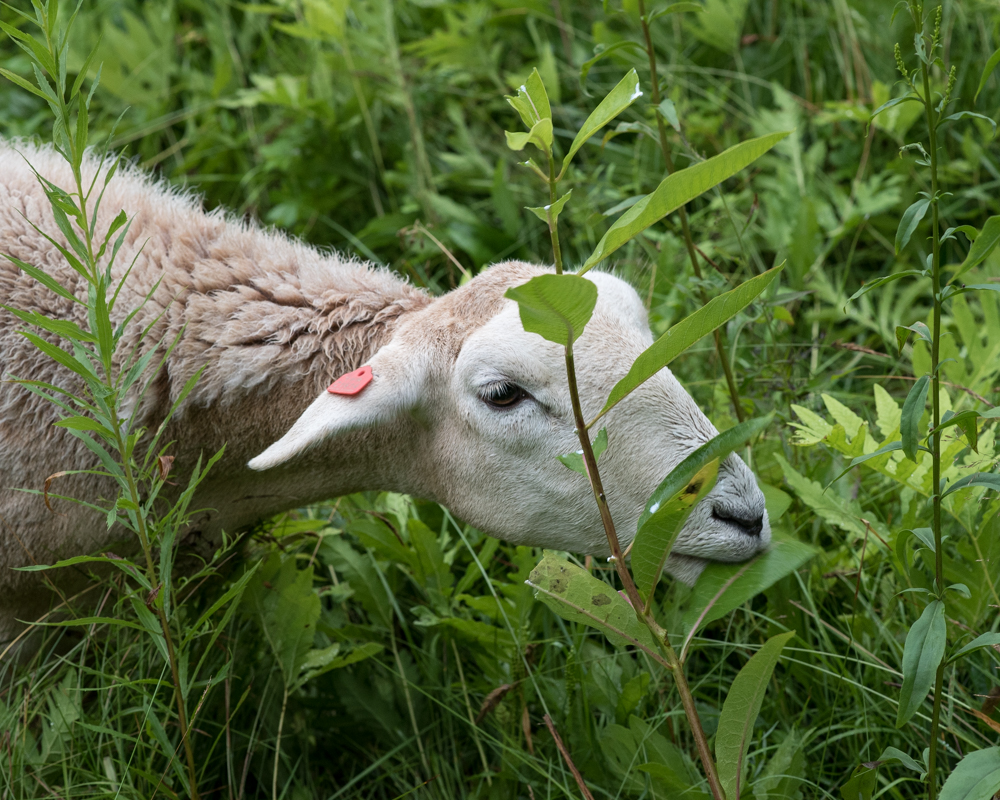
Both the UNH and UVM documents list it as toxic, but rate its danger as low since it is supposed to be very unpalatable to sheep — unless the flock has no other options, they won’t get poisoned by eating milkweed. In this case, though, I had just moved the flock into a new section of pasture, and I watched this ewe seek out and eat all the milkweed she could find. She showed no sign of being dead this evening, so I’m assuming that at some level she knows what she’s doing. Livestock people sometimes talk about “nutritional wisdom” in their flocks, whereby their animals will choose to eat plants that meet their evolving nutritional or medicinal needs. It’s very appealing to imagine that this morning’s milkweed-eater was addressing some specific need of hers, but I’m not equipped to do more than wish and speculate at the moment.
When I first went out to the flock this morning, I had to think about the other side of plant choice question. At first, it seemed that there was lots of forage left in the section of pasture where they’d spent the night.
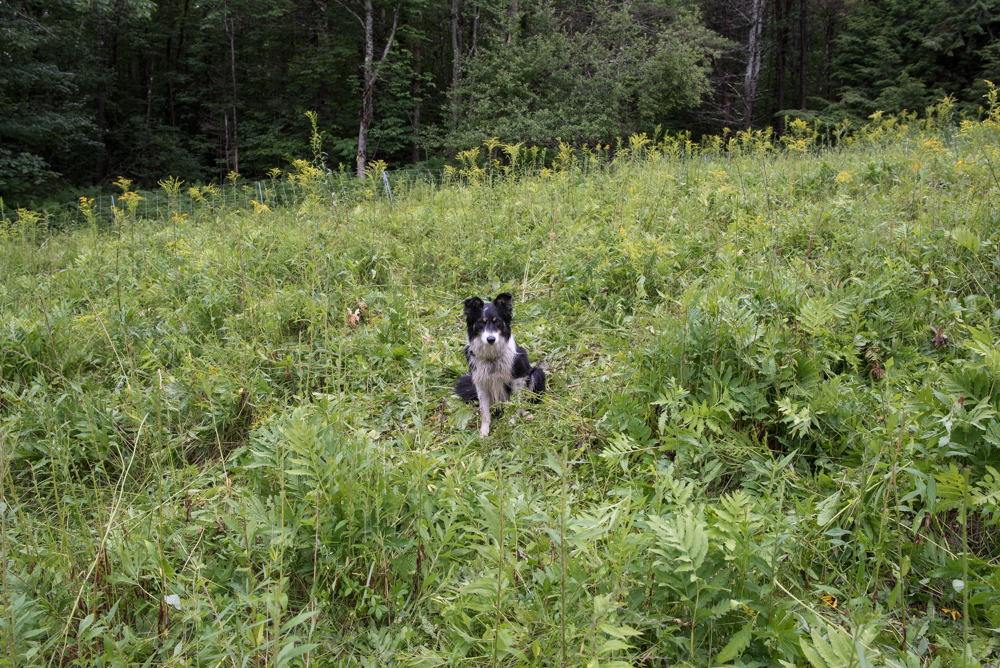
But when I looked more closely, I realized that the sheep had selectively eaten virtually everything in the pasture expect for the ferns.
 I decided that my initial sense that the sheep could continue to graze this section was probably wrong. If they had gone to the effort of eating around the ferns during the time they’d been grazing this section, leaving them to continue grazing would undermine any nutritional wisdom they might possess. Once they got hungry enough, they would probably go back for the ferns they initially passed over; perhaps they just didn’t like the taste of sensitive fern (Onoclea sensibilis), but I didn’t want to take the chance that it was nutritionally deficient or actively harmful.
I decided that my initial sense that the sheep could continue to graze this section was probably wrong. If they had gone to the effort of eating around the ferns during the time they’d been grazing this section, leaving them to continue grazing would undermine any nutritional wisdom they might possess. Once they got hungry enough, they would probably go back for the ferns they initially passed over; perhaps they just didn’t like the taste of sensitive fern (Onoclea sensibilis), but I didn’t want to take the chance that it was nutritionally deficient or actively harmful.
The town of Sullivan is known for its wild blueberries, and this summer is turning out to be a very good year for them. I’m slightly disappointed that the border collies don’t show any interest in mining this trove, but the sheep are making up for it.
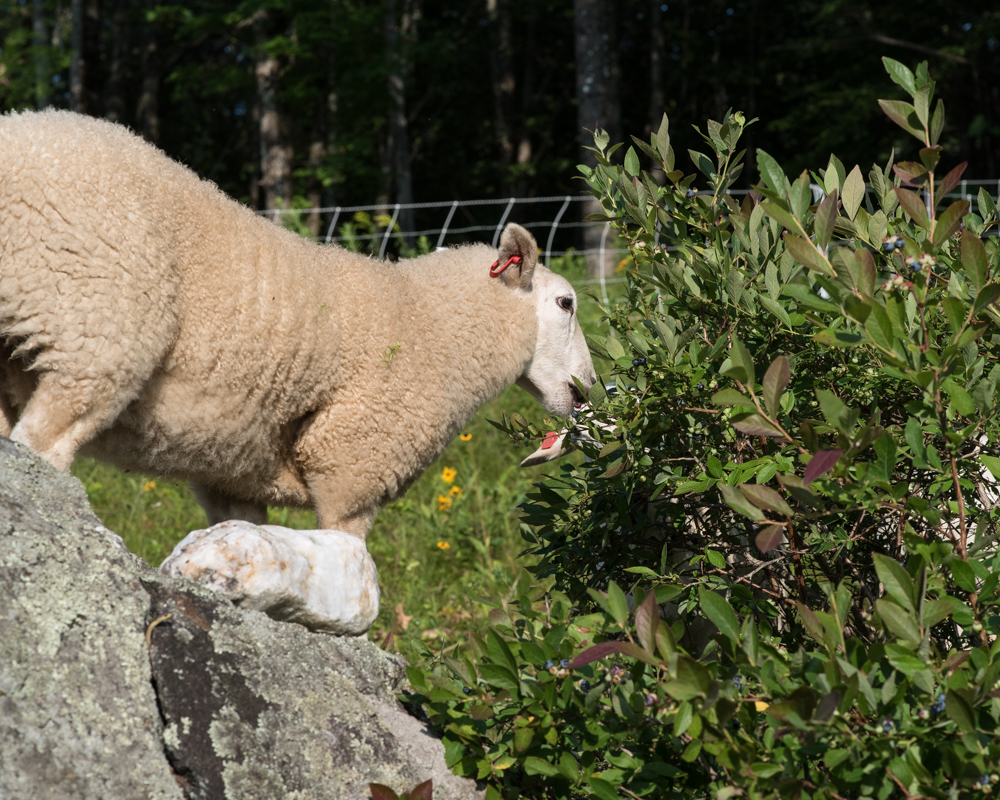
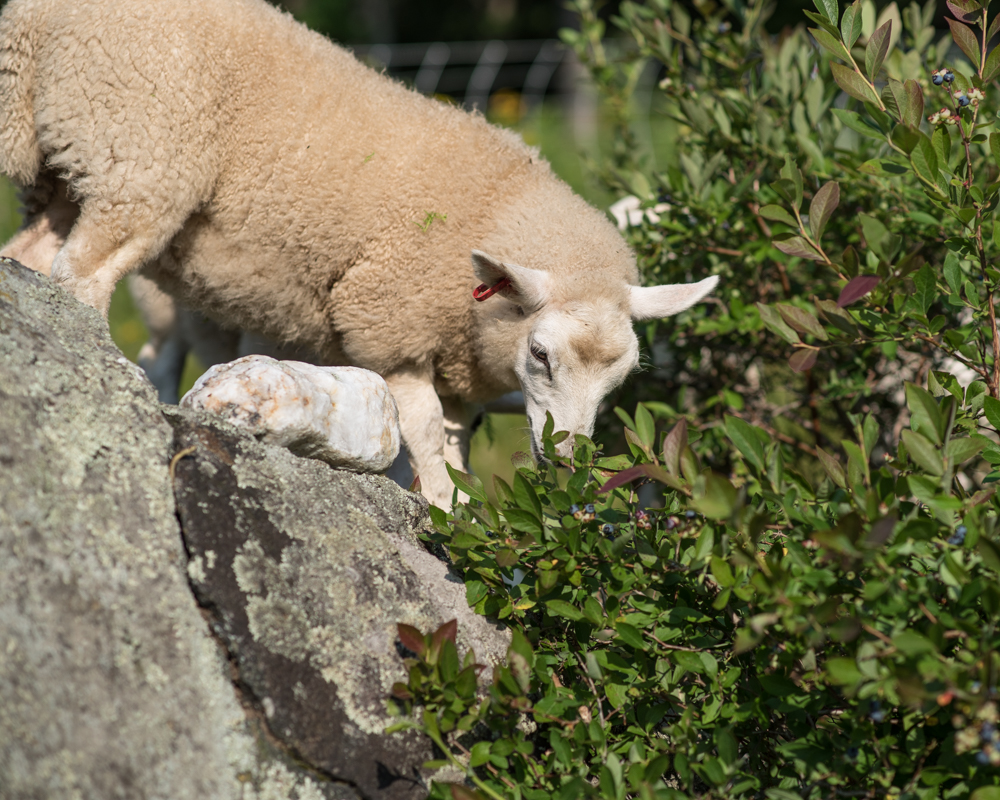
Tagged: blueberry bush, browsing, Casey, lamb, rock, sheep, wild blueberries
With help from my friend Eric White, the sheep completed the second stage of their Tour of Sullivan today, ending up at the Casey place. A little experience and a working transmission made this move feel much smoother than the first one two weeks ago, though it was still a long day. I was pleasantly surprised that the sheep already seem acclimated to the trailer, with half the flock jumping right in. The other half took a bit of persuasion, but no sheep-lifting was needed. I was also comforted that I’m starting to understand how to make the trailer go backward in the direction I want; last time I feared that this skill would be years in coming.
The most challenging part of the flock move was convincing them to jump over a tiny stream to get to their pasture. Cass pushed and I pulled, and eventually the sheep decided that the lush pasture trumped their fear of the jump.

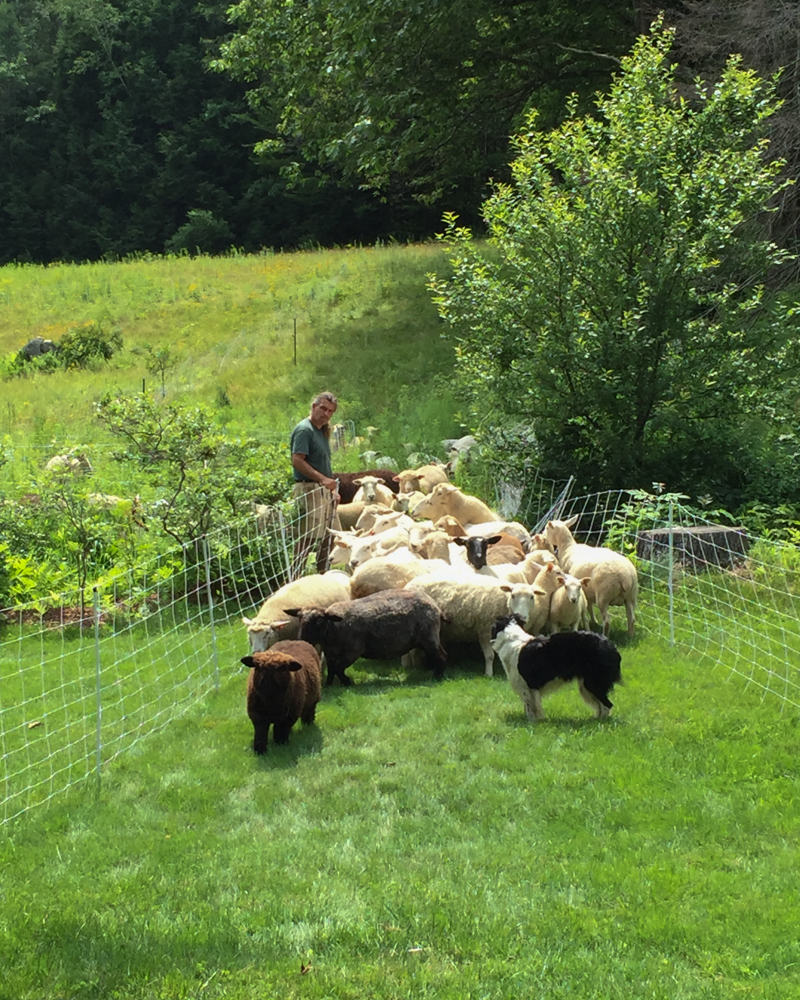
The Caseys, who have been enthusiastic supporters of my shepherding madness, seemed to be enjoying their guests this evening.
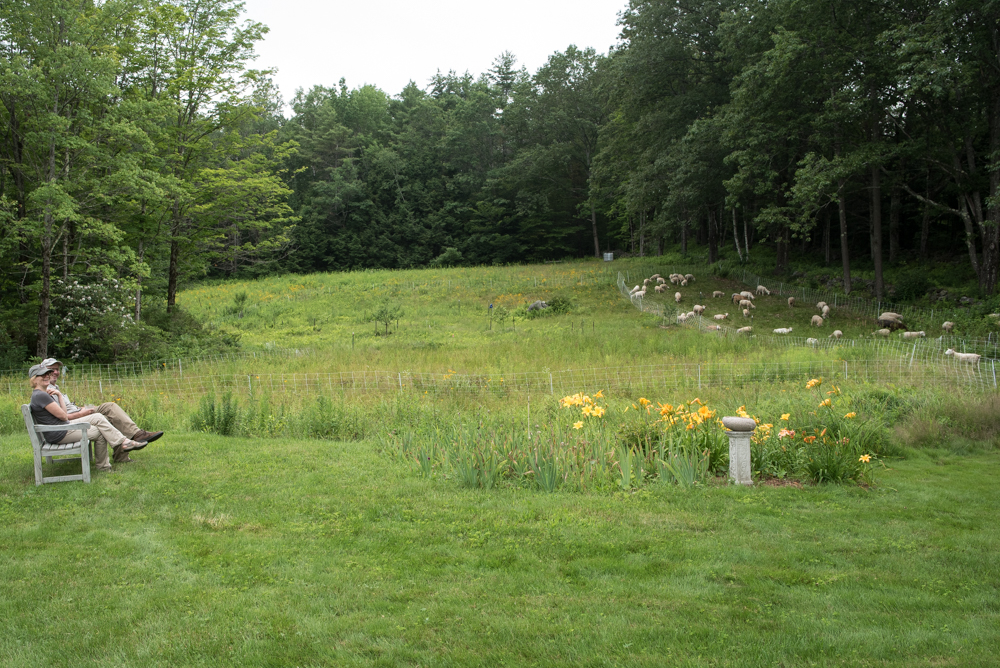
Tagged: border collie, Casey, Cass, Eric White, grazing, guest sheep, herding, pasture, Tour of Sullivan
I finished grazing the Miles pasture yesterday and walked the sheep to the property next door (owned by a family in Shanghai, a story for another day), essentially an overgrown logging road rather than an actual pasture.
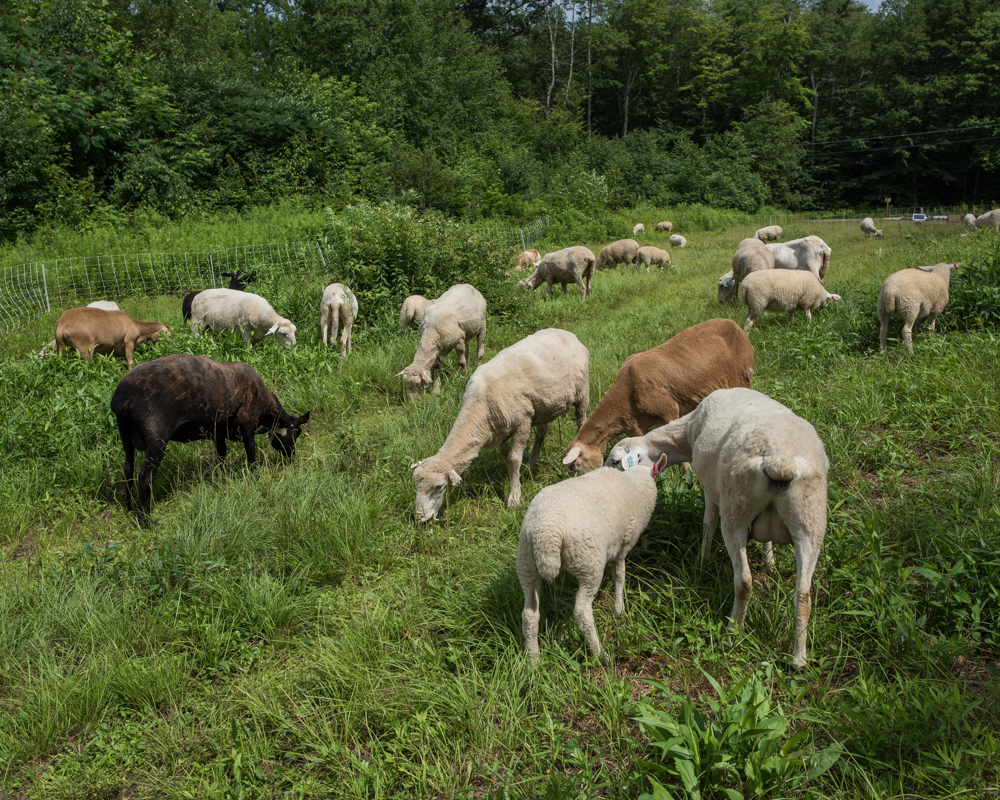
Todd Smith, the local caretaker of the property, is interested in reclaiming some of the land from the encroaching forest, so I let the sheep hit the vegetation harder than I would in other circumstances.
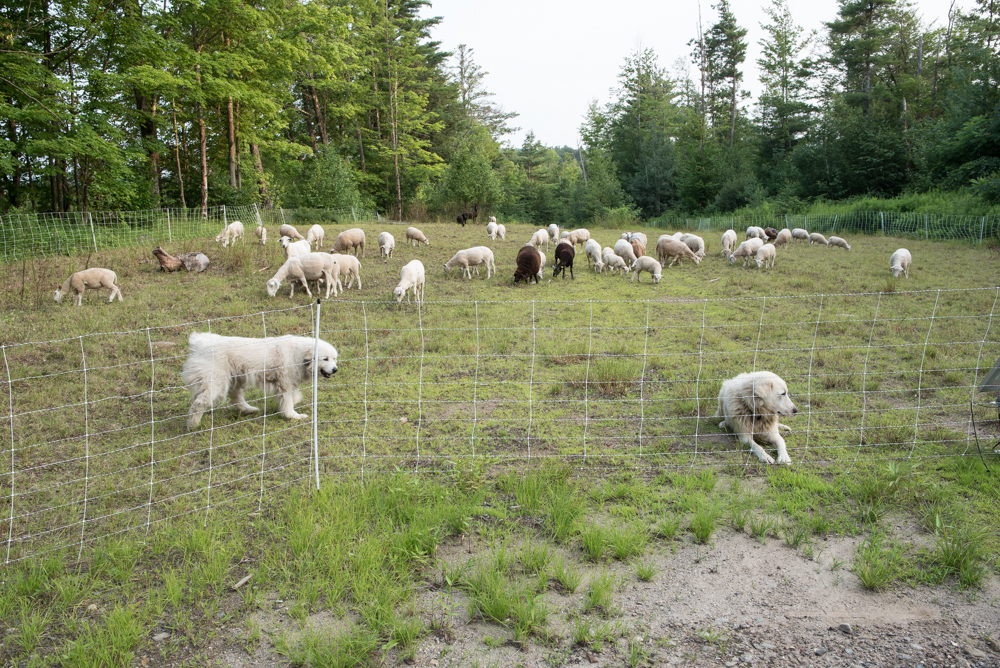
By this evening, they had eaten every leaf and blade of grass within their reach, except for a plant call sweetfern (Comptonia peregrina, an angiosperm, so neither a fern, nor detectably sweet; go figure).

There was no easy way to extend the fence to give the flock access to more grazing, and I was exhausted from a long day in Boston, so I brought them take-out to tide them over. Tomorrow morning I plan to move the flock across town to new pasture.

Tagged: bravo, Chinese land, Comptonia peregrina, hay, Hubbard Road, marking, sheep, sweetfern, take-out, Todd Smith
Bill claims that sheep do better when they have a view to accompany their grazing. I don’t have data yet to confirm or refute his assertion, but Mt. Monadnock keeps watch over the upper part of the Miles’s field.
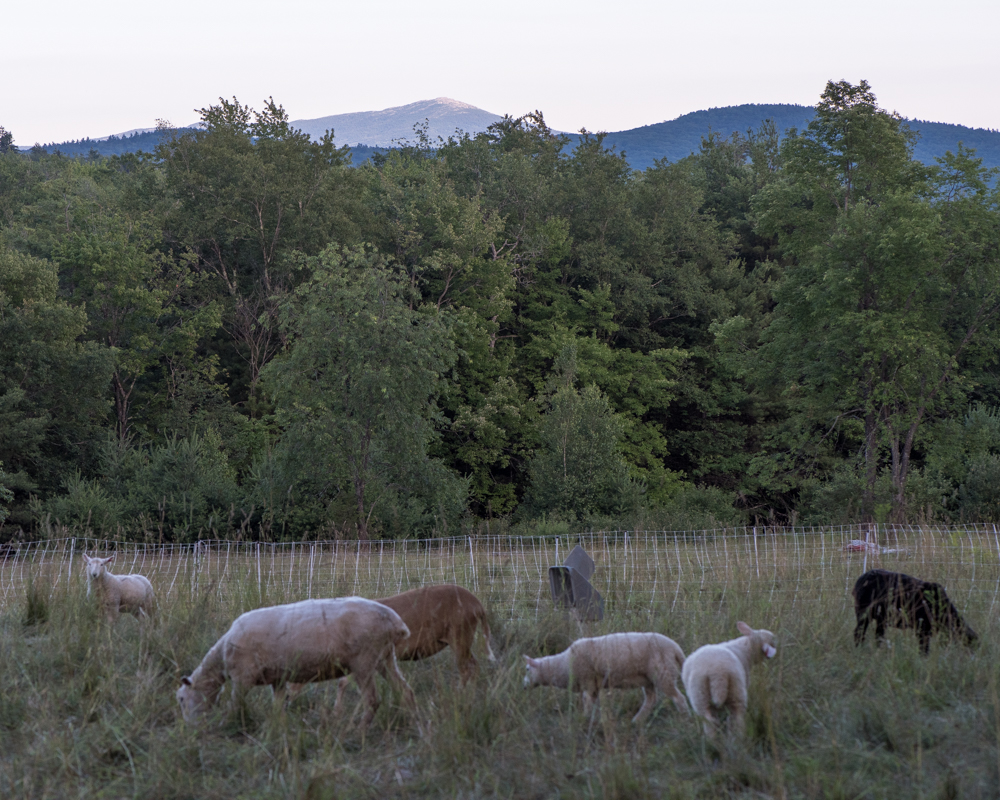
And doesn’t seem to harm the shepherd any.
Tagged: Bill Fosher, flock, grazing, Hubbard Road, Miles, Mt Monadnock, pasture, sheep, view
This is what the woodsy section of pasture looked like this morning after two days of sheep grazing. For reference, this is what it looked like when they started.

Grass, ferns, and weeds are largely eaten to the ground, and the leaves on trees and bushes are gone up to sheep-reaching height. I would normally move the flock out before they had eaten the flora so thoroughly, but I’m deliberately trying to reclaim this area as pasture, so I wanted the sheep to do a bit of damage to the woody plants. I let them get a little hungrier than I normally would, to encourage them to eat things they might otherwise disdain. If I pulled stunts like this too often, the nutritional status of the flock would start to suffer — lambs grow best when they have very consistent access to all the food they want to eat — but an occasional day where I prioritize land management will hopefully be ok.
Tagged: browsing, grazing, landscape management, overgrazing, pasture reclamation, sheep
Foggy morning at the Miles’s place…
 And the sheep in the woods seem to have had a fine night.
And the sheep in the woods seem to have had a fine night.

I was a little worried that the electronet might not be an effective predator deterrent with trees and bushes right up against it, but Bravo and Cleo have had more than a week to establish these fields as their territory, and there were no signs of a challenge to them. By tomorrow morning, the sheep will have eaten the shrubs and trees down pretty thoroughly, so Cass and I will find out if we can move them out of their grottos.
Jungle is starting the retake the back portion of the pasture where the sheep have been grazing; my hosts, the Miles family, would prefer to keep it as grassland, so I moved the sheep back there today to do what they can.


A few of the lambs got upset when they couldn’t find their mothers, but the sheep mostly seemed delighted with all the nooks and crannies in this part of the pasture.

I’m a bit unclear how we’ll get them out of there, but I’m assuming that Cass will figure out something clever and persuasive.